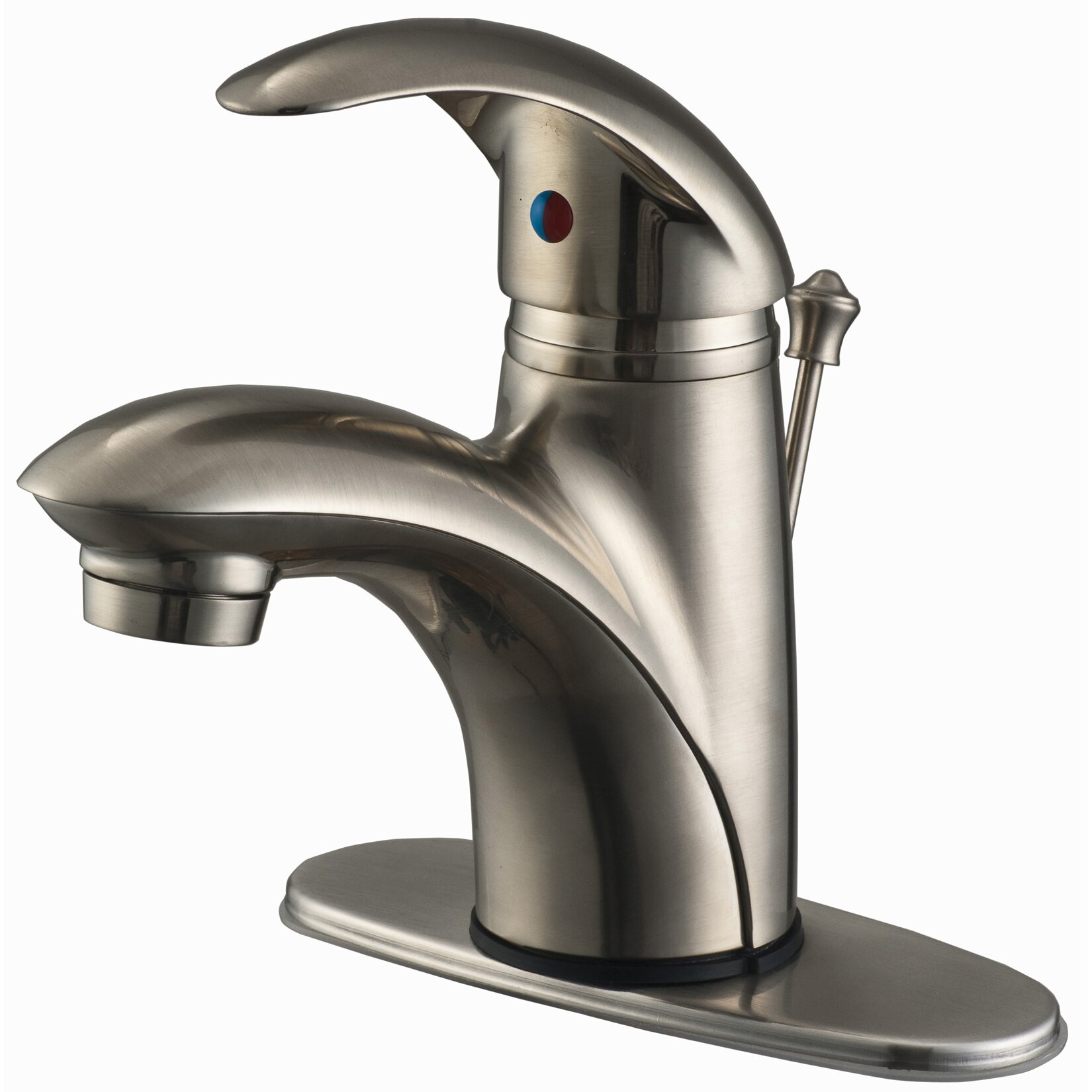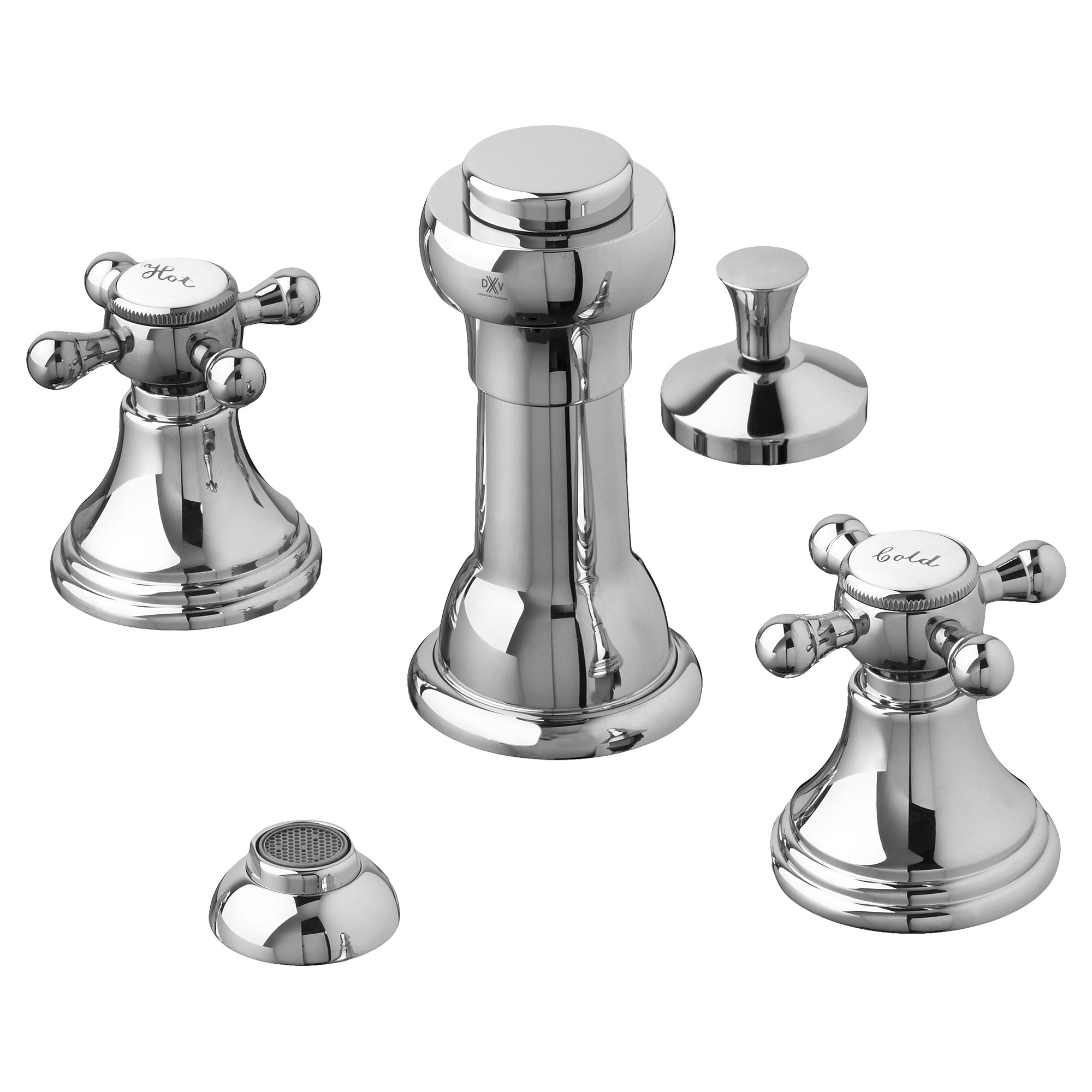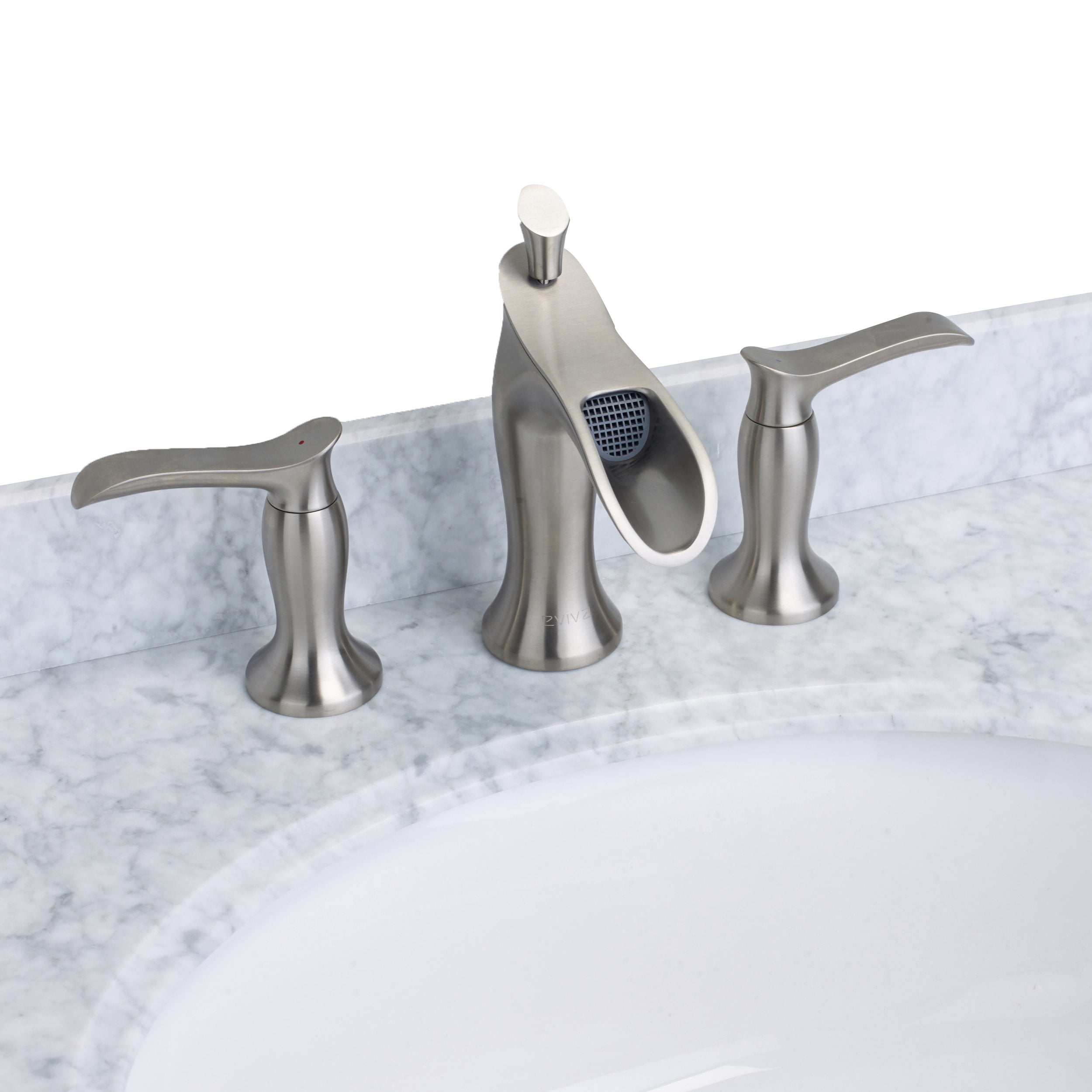Introduction to Three-Hole Bathroom Faucets

A three-hole bathroom faucet, also known as a widespread faucet, is a popular choice for homeowners who desire a more traditional and elegant look for their bathroom. This type of faucet features three separate holes for installation: one for the spout and two for the handles. The handles can be positioned on either side of the spout or in a center-set configuration.
Three-hole bathroom faucets offer a variety of advantages over other faucet types, including enhanced functionality and aesthetics. They allow for greater flexibility in handle placement, providing a more comfortable and ergonomic experience. Additionally, the widespread design often accommodates larger sinks and basins, creating a more spacious and luxurious feel.
Styles and Finishes
Three-hole bathroom faucets are available in a wide range of styles and finishes to complement any bathroom décor. Some common styles include:
- Traditional: These faucets feature classic designs with ornate details and curves, often inspired by Victorian or Edwardian aesthetics. They typically have cross-shaped handles and a high spout.
- Contemporary: Modern three-hole faucets emphasize clean lines, minimalist designs, and sleek finishes. They often feature lever handles and a low-profile spout.
- Transitional: This style blends traditional and contemporary elements, offering a balanced and versatile look. Transitional faucets may feature rounded edges, simple details, and a combination of lever and cross-shaped handles.
In terms of finishes, three-hole bathroom faucets are available in a wide variety of materials, including:
- Polished Chrome: A classic and timeless finish that reflects light and adds a touch of elegance.
- Brushed Nickel: A warm and understated finish with a subtle, textured surface.
- Oil Rubbed Bronze: A rich and rustic finish that adds warmth and character to the bathroom.
- Matte Black: A sleek and modern finish that creates a sophisticated and minimalist aesthetic.
Installation and Components: Three Hole Bathroom Faucet
Installing a three-hole bathroom faucet is a straightforward process that can be accomplished with basic plumbing skills. The process involves assembling the faucet components, connecting it to the water supply lines, and securing it to the sink. Understanding the components and their functions is crucial for a successful installation.
Components and Functions, Three hole bathroom faucet
The key components of a three-hole bathroom faucet are:
- Spout: The spout is the main component that delivers water. It is usually designed with an aerator to create a smooth, even flow of water.
- Handles: Three-hole faucets typically have two handles, one for hot water and one for cold water. These handles control the flow and temperature of the water.
- Valve: The valve is located inside the faucet body and controls the flow of water. It is typically a ceramic disc valve, which is known for its durability and smooth operation.
- Supply Lines: These are flexible tubes that connect the faucet to the water supply lines in the wall. They are typically made of braided stainless steel for durability and flexibility.
- Mounting Plate: The mounting plate is a metal plate that secures the faucet to the sink. It typically has holes for the faucet handles and spout.
- Escutcheons: Escutcheons are decorative covers that hide the mounting plate and add a finishing touch to the faucet.
Choosing the Right Tools and Materials
- Tools: You will need basic plumbing tools for installation, including a wrench, adjustable wrench, channel lock pliers, and a Phillips screwdriver. You may also need a pipe wrench for tightening the supply lines.
- Materials: In addition to the faucet itself, you will need supply lines, mounting hardware, and sealant tape. It is important to use high-quality materials that are compatible with your faucet and plumbing system.
Choosing the Right Faucet
Selecting the perfect three-hole bathroom faucet involves a careful consideration of several factors. These factors will ensure that the faucet you choose seamlessly blends with your bathroom’s aesthetic, meets your functional needs, and fits within your budget.
Budget Considerations
The cost of three-hole bathroom faucets can range widely, from a few hundred dollars to several thousand dollars, depending on the brand, materials, and features. It’s crucial to establish a budget before starting your search. Consider the overall cost of your bathroom renovation project, including labor and materials.
Style and Design
Three-hole bathroom faucets come in a variety of styles, from traditional to contemporary. Consider the overall design of your bathroom and choose a faucet that complements the existing fixtures and décor. For example, a traditional bathroom might benefit from a faucet with ornate details, while a modern bathroom might call for a sleek, minimalist design.
Functionality
Beyond aesthetics, the functionality of a three-hole bathroom faucet is critical. Consider the following features:
- Water Flow Rate: The flow rate of a faucet is measured in gallons per minute (GPM). A higher flow rate will result in a faster filling time for sinks and tubs, but it can also lead to higher water consumption. Most modern faucets have a flow rate of 1.2 GPM or less, which is considered water-efficient. However, if you prefer a more powerful stream, you may want to consider a faucet with a higher flow rate. For example, a faucet with a 1.5 GPM flow rate might be better suited for a large soaking tub or a double-sink vanity.
- Spout Reach: The spout reach of a faucet is the distance from the faucet base to the end of the spout. A longer spout reach can be helpful for larger sinks or tubs, as it allows for greater clearance for filling containers or washing dishes. A shorter spout reach might be better suited for smaller sinks or tubs, as it can help to prevent splashing.
- Handle Types: Three-hole bathroom faucets come with a variety of handle types, including lever handles, cross handles, and knob handles. Lever handles are typically easier to operate than cross handles or knob handles, and they can be a good option for people with limited hand mobility. Cross handles and knob handles can add a more traditional or decorative touch to a bathroom.
Recommended Faucet Brands and Models
Several brands offer high-quality three-hole bathroom faucets, each with its own unique features and price points.
- Kohler: Kohler is a well-known brand that offers a wide range of faucets in various styles and finishes. Their faucets are known for their durability and reliability. The Kohler Artifacts Three-Hole Bathroom Faucet is a popular choice for its classic design and high-quality construction.
- Delta: Delta is another reputable brand that offers a wide selection of faucets. Their faucets are known for their innovative features, such as their Diamond Seal Technology, which provides a leak-free guarantee. The Delta Trinsic Three-Hole Bathroom Faucet is a popular choice for its modern design and advanced features.
- Moen: Moen is a leading brand that offers a variety of faucets in different styles and finishes. Their faucets are known for their durability and ease of use. The Moen Arbor Three-Hole Bathroom Faucet is a popular choice for its traditional design and its easy-to-clean finish.
When choosing a three-hole bathroom faucet, consider the overall design of your bathroom, your budget, and your desired functionality. By carefully weighing these factors, you can find the perfect faucet to enhance your bathroom’s style and functionality.
Maintenance and Care

A well-maintained three-hole bathroom faucet can provide years of reliable service. Regular cleaning and occasional maintenance can help prevent issues and ensure optimal performance. By following a simple routine, you can keep your faucet looking and functioning its best.
Routine Maintenance Schedule
A routine maintenance schedule helps ensure the longevity and performance of your three-hole bathroom faucet. It involves regular cleaning and occasional checks for any potential issues.
- Monthly Cleaning: Clean the faucet with a soft cloth and mild dish soap to remove dirt and grime. Pay special attention to the aerator, which can become clogged with debris.
- Quarterly Inspection: Inspect the faucet for any signs of leaks, drips, or loose parts. Check the handles for smooth operation and ensure the water flow is consistent.
- Annual Maintenance: Remove and clean the aerator to remove mineral buildup and ensure optimal water flow. Check the faucet’s cartridge for wear and tear and replace it if necessary.
Common Issues and Troubleshooting
Three-hole bathroom faucets are generally reliable, but some common issues can arise.
- Leaking Faucet: A leaking faucet can be caused by a worn-out cartridge, a loose or damaged O-ring, or a clogged aerator. To troubleshoot, check the cartridge for wear and tear, inspect the O-ring for damage, and clean or replace the aerator.
- Dripping Faucet: A dripping faucet is often caused by a worn-out cartridge or a faulty washer. Replacing the cartridge or washer can usually resolve the issue.
- Low Water Pressure: Low water pressure can be caused by a clogged aerator, a buildup of mineral deposits in the faucet, or a problem with the water supply line. Clean the aerator, remove mineral deposits, or check the water supply line for any obstructions.
- Sticking Handles: Sticking handles can be caused by mineral buildup, debris, or a worn-out cartridge. Clean the handles with a mild cleaning solution, remove any debris, or replace the cartridge if necessary.
Cleaning and Maintenance Tips
Proper cleaning and maintenance are essential for the longevity and performance of your three-hole bathroom faucet.
- Avoid Harsh Chemicals: Avoid using harsh chemicals or abrasive cleaners on your faucet, as these can damage the finish.
- Use a Soft Cloth: Always use a soft cloth to clean your faucet. Avoid using abrasive sponges or scrubbers.
- Dry Thoroughly: After cleaning, dry the faucet thoroughly with a soft cloth to prevent water spots and mineral buildup.
- Regularly Clean the Aerator: The aerator can become clogged with debris, reducing water flow. Remove and clean the aerator regularly to maintain optimal water flow.
- Replace Worn-Out Parts: Replace any worn-out parts, such as the cartridge, O-rings, or washers, promptly to prevent further damage.
Design Considerations

A three-hole bathroom faucet is more than just a functional fixture; it’s a design element that can significantly impact the overall aesthetic of your bathroom. By carefully selecting the right faucet, you can elevate the style and create a cohesive and stylish bathroom space.
Faucet Styles and Bathroom Decor
The style of your bathroom faucet should complement the overall design theme of your bathroom. Here are some examples of how different faucet styles can enhance various bathroom decor:
- Traditional Bathrooms: For traditional bathrooms with ornate details and classic fixtures, a faucet with intricate details, like a cross-handle design or a polished brass finish, will seamlessly blend in.
- Modern Bathrooms: Modern bathrooms often feature clean lines and minimalist aesthetics. A sleek, contemporary faucet with a chrome or brushed nickel finish will complement the minimalist design and create a sophisticated look.
- Transitional Bathrooms: Transitional bathrooms strike a balance between traditional and modern elements. A faucet with a timeless design, such as a single-lever or a bridge faucet, can seamlessly integrate with both traditional and modern elements in the bathroom.
Choosing the Right Faucet for a Cohesive Design
To ensure your bathroom faucet harmonizes with the overall design, consider these factors:
- Finishes: The finish of your faucet should complement the finishes of other fixtures in your bathroom, such as the showerhead, towel bars, and hardware. Popular finishes include chrome, brushed nickel, oil-rubbed bronze, and matte black.
- Style: Choose a faucet style that complements the overall design theme of your bathroom. For example, a traditional bathroom might feature a cross-handle faucet, while a modern bathroom might opt for a sleek, minimalist design.
- Scale: The size of the faucet should be proportionate to the size of the sink and the overall space. A small faucet might look out of place in a large bathroom, while a large faucet might overwhelm a small space.
